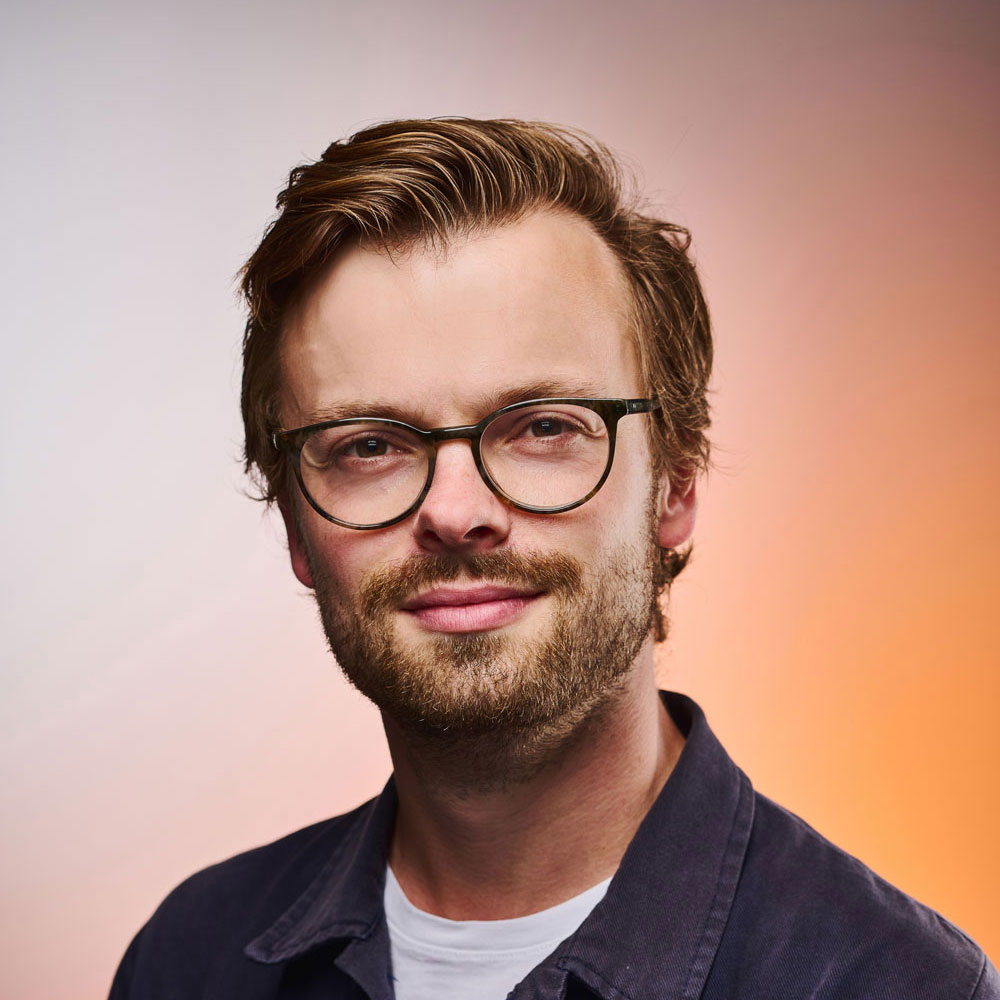Is AI art sacrilegious?
We talk to a leading theologian and art historian about the impact of technology on religious art.
AI generated art has proven a contentious concept, and as it continues to rise in ubiquity thanks to the advent of new tools including Adobe Firefly and OpenAI's Sora, questions surrounding ethics, copyright and the existential threat to creativity continue to surround the tech.
Many designers wouldn't hesitate to call AI art sacrilegious. But what about when it comes to 'sacred' art? In the era of the infamous Pope in a puffer jacket, it's clear that not even religious imagery is safe from the rise of AI. We caught up with theologian and art historian Robin M. Jensen to talk about the impact of technology on religious art, and whether AI art can indeed be considered sacrilegious.

Is using technology and AI in the creation of religious artwork sacrilegious?
To some, the term 'sacrilegious' might seem like an overstatement when discussing AI in the realm of art. It's important to note that many artists incorporate machine-generated images into their work, drawing inspiration from them or using machines to create unique pieces. Moreover, many examples of “sacred art” can be viewed as heretical and even blasphemous in some eyes while not in others. Thus, the category “sacrilegious” is complicated by the fact that viewers will have different responses. Thus, the greater question may be best centered around the issue of how viewers respond if they believe the work is robot-generated rather than human-made. This focuses on the work’s reception and not on the manner of its creation. Whether the artwork is produced by humans or generated by AI, what matters most in answering this question is its impact on the viewer's personal spiritual experience.
In honour of Facebook being shut down, here is a collection of images that I grabbed yesterday when the algo decided I needed Jesus AI fan art. pic.twitter.com/OOrWXgn2X5March 5, 2024
How does the way religious art is developed and positioned impact how people experience it?
The development and placement of religious art significantly influences one's engagement and the way they are affected by it. Whether displayed in a church, museum or virtual space, the setting can profoundly alter how viewers perceive its spiritual significance and the depth of their experience. For instance, if you take a sacred painting from a church, move it to a football stadium and display it in a digital format on the Jumbotron, will you experience that art differently? In a study we recently conducted with funding from Templeton Religion Trust, the results highlighted the importance of environmental factors in shaping viewers'; engagement with and memory of the artworks. This suggests that the setting in which religious art is displayed can significantly impact the viewer's perception and interpretation of its spiritual significance.

Are certain types of religious art more favorable to spiritual experiences than others?
Get the Creative Bloq Newsletter
Daily design news, reviews, how-tos and more, as picked by the editors.
Both traditional and abstract religious art can engage viewers in unique ways. Non- representational art tends to stimulate cognitive engagement and personal interpretation, fostering a contemplative experience. Representational art, on the other hand, evokes a strong emotional response, providing a culturally anchored connection to religious traditions. Through our research, we are finding that subjects spend more time looking at abstract objects and report a stronger effect than more traditional pieces. What has surprised us is that people have a better memory of nonfigurative objects than pictorial ones. The aesthetic qualities and stylistic features of religious art, regardless of its subject matter (or lack thereof), play a crucial role in shaping the individualized spiritual experiences of viewers.
How is technology utilised in determining how religious art is experienced and understood?
Technology facilitates the exploration of how viewers perceive, understand, and emotionally respond to religious art. It offers valuable insights into the spiritual significance of art and deepens our understanding of its impact on individuals. For instance, virtual reality (VR) technology can be used to create immersive experiences for viewers encountering religious art by simulating different spatial contexts and presenting artworks in virtual environments. Through our research, we can track people’s eye movements when they look at a piece of art, to study how they attend to different elements in a composition. We can then put those pieces of art in different locations from a church to a museum – even a casino or a fast-food restaurant, and we can see whether people examine those pieces differently in non-congruent contexts. Technology serves as a powerful tool for enhancing the study of religious art and deepening our understanding of its impact on individuals and how they engage with it.
How has the role of ‘authenticity’ changed for art as a result of these technological advances?
A valid concern arises regarding the authenticity of AI-generated art, in particular questions about whether AI could be viewed as a form of plagiarism for using existing art without crediting the original sources. Moreover, the way we define authenticity – and even art, for that matter – has changed drastically over the years, moving beyond merely framed, rectangular items hanging on walls. Artists’ work can incorporate a wide variety of expressive media and may be collaborative, performative, or purely conceptual. It might be meant to last for ages or only for a few minutes. Viewers may encounter art in a vast array of places, forms, and events. Authenticity is, therefore, a difficult category to define or judge. Technology has redefined our interpretation of authenticity, emphasizing the immersive and interactive nature of viewer experiences. It associates the impact and depth of engagement with the artwork, rather than its physical authenticity. I have a passion for uncovering the intersection of spirituality, art and people’s religious experiences through the context in which they worship, and technology helps to uncover this connection.

Robin M. Jensen is the Patrick O’Brien Professor of Theology at the University of Notre Dame (USA) where she also holds faculty positions in Art History and Classics. Her research focuses on the intersections of early Christian theology, ritual practices, and material culture. Among her published books are Understanding Early Christian Art (Routledge, 2024), Face to Face: Portraits of the Divine in Early Christianity (Fortress, 2004), The Substance of Things Seen: Art, Faith, and the Christian Community (Eerdmans, 2004), Living Water: Images, Symbols, and Settings of Early Christian Baptism (Brill 2011), Christianity in Roman Africa: The Development of Its Practices and Beliefs (Eerdmans, 2014), The Cross: History, Art, and Controversy (Harvard University Press, 2017), and From Idols to Icons: The Emergence of Christian Devotional Art in Late Antiquity (University of California, 2022).

Thank you for reading 5 articles this month* Join now for unlimited access
Enjoy your first month for just £1 / $1 / €1
*Read 5 free articles per month without a subscription

Join now for unlimited access
Try first month for just £1 / $1 / €1

Daniel John is Design Editor at Creative Bloq. He reports on the worlds of design, branding and lifestyle tech, and has covered several industry events including Milan Design Week, OFFF Barcelona and Adobe Max in Los Angeles. He has interviewed leaders and designers at brands including Apple, Microsoft and Adobe. Daniel's debut book of short stories and poems was published in 2018, and his comedy newsletter is a Substack Bestseller.
